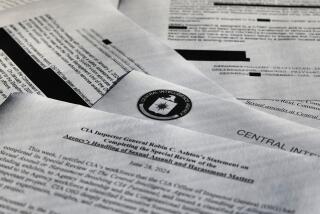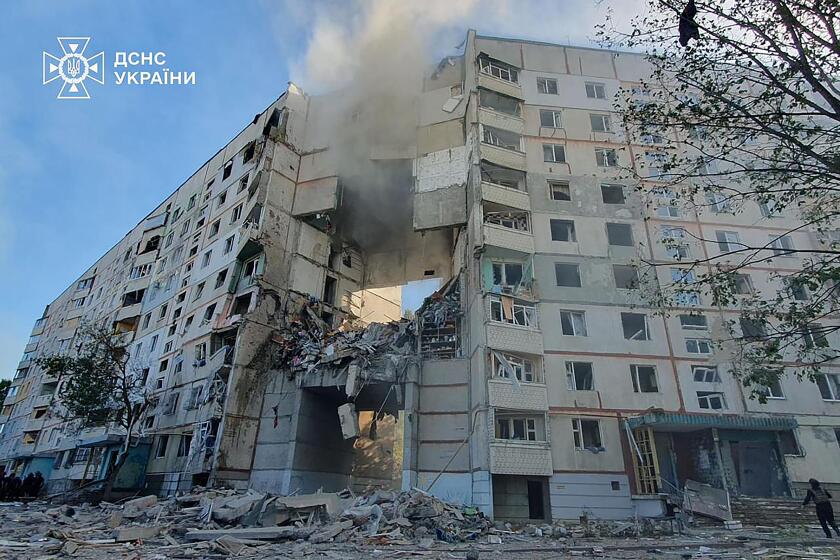In finding Osama bin Laden, CIA soars from distress to success
The first CIA officers who rushed to Afghanistan to find Osama bin Laden after the terrorist attacks of 2001 had to buy field gear at an REI camping goods store in Virginia. Some flew in on rickety, former Soviet helicopters. A few rode horses.
What a difference a decade makes.
Thanks to U.S. intelligence, the Navy SEALs who killed Bin Laden last Monday swept into Pakistan on nearly silent, secret stealth helicopters. The assault team had practiced in Afghanistan on a full-scale mock-up of the maze-like compound.
Photos: The death of Osama bin Laden
From satellite photos, they knew where the occupants hung their laundry and burned their trash. Spies at a nearby safe house had helped count the women and children inside. CIA analysts knew a tall man strode the dirt courtyard, but the suspect they dubbed “the Pacer” never left the prison-like walls.
The CIA’s stunning success, after its disastrous judgments before the 2003 invasion of Iraq and other high-profile failures, follows drastic increases in funding, staff, new high-tech systems and tools, and the reorganization of the entire U.S. intelligence community since 9/11.
But it also underscores how the spy service best known for stealing secrets has become far more militarized in the last decade. That’s unlikely to change when Gen. David H. Petraeus, who has helped run the wars in Iraq and Afghanistan, takes over as the next CIA director this summer.
The CIA not only works with elite clandestine commandos to hunt and kill suspected terrorists, including night missions for high-value military targets in Afghanistan. Operators at CIA headquarters in suburban Langley, Va., also fire missiles from airborne Predator drones, which have killed more than 1,000 people in Pakistan, and watch on video as they explode.
“The Predator stuff gets to be very, very personal,” said a former U.S. official, speaking on condition of anonymity because he was discussing a classified program. “You’re basically seeing a person and the people around them, and you know that in 20 or 30 seconds they very well could be dead, if you give the order.”
Lethal counterterrorism operations have become “a way of life” at the CIA, according to Philip Mudd, who tracked terrorists at the CIA and FBI until he retired in 2009.
When Mudd joined the CIA as an analyst three decades ago, the focus was to provide strategic analysis of America’s Cold War enemies: “What are the Soviets up to?”
Now special “targeting analysts” track individuals through their digital trails, he said.
“You have analysts whose [target] is a person,” Mudd said. “It’s ‘How do I know enough about this guy to predict what he’s going to do tomorrow and next week?’”
The end of the Cold War saw the CIA cut staff, close foreign posts and shrink operations. But Congress has tripled funding for U.S. intelligence since 2001 — it now totals about $80 billion annually — and an influx of young people has brought fresh blood to an agency that was struggling to stay relevant.
At first “they didn’t know anything about anything,” said a former top CIA official. “Now, 10 years later, they’ve got the razor’s edge. They’ve stuck with it every year and they’re working in it, they’re getting better, and they don’t get tired of it. The culture now has gotten deep.”
It is CIA tradition to complain that while the agency’s failures become public, it rarely gets credit for successes. Last week saw U.S. intelligence officials rushing to brief reporters and issuing news releases to congratulate each other.
“In my nearly 50 years in intelligence,” said National Intelligence Director James R. Clapper, “never have I seen a more remarkable example of focused integration, seamless collaboration and sheer professional magnificence.”
Not everyone was so sanguine about the Bin Laden raid, however.
“When we’re all done celebrating — and we should be celebrating — we should soberly look at the fact that it took us a decade to get this guy when apparently he’s been sitting still for five or six years,” said Charles “Sam” Faddis, a longtime CIA case officer who retired in 2008 and wrote a book critical of the agency. “I don’t think we ought to be saying this is as good as it gets.”
Peter Hoekstra, the Michigan Republican who was chairman of the House Intelligence Committee until he retired from Congress in January, said the CIA simply wasn’t “good against the terrorist threat and Al Qaeda” back in 2001. “I have no doubt that they are still imperfect, but they are a whole lot better,” he said.
Sen. Dianne Feinstein (D-Calif.), chairwoman of the Senate Intelligence Committee, which provides oversight of the intelligence community, applauded the agency’s ability to collect and sort out the countless clues and streams of data pouring in. “Our ability to analyze material is better than it has ever been,” she said.
“We’ve grown much better at fusing all sorts of data and have a great deal of capacity to burrow in, once we have a trail,” agreed Juan Zarate, who served as deputy national security advisor for combating terrorism under President George W. Bush.
Some of the reforms since the Sept. 11, 2001, attacks clearly paid off. One goal was to dismantle the “stovepipes” that prevented America’s 16 intelligence agencies from sharing information that might have detected the attack.
As a result, the National Security Agency, which conducts eavesdropping operations, and the National Geospatial-Intelligence Agency, which handles spy satellite imagery, set up what they called “geocells.” Their analysts worked together to integrate communications intercepts, images and other intelligence.
The analysts “drove each other to actually make sense of the half-dots, the shards, the shreds, the nuances that they already had in hand, the hunches,” John Inglis, the NSA’s deputy director, said in a speech last fall.
The trail that led to Bin Laden’s hideout in the city of Abbottabad began with interrogations of detainees in secret CIA prisons. By 2004, officials had the nom de guerre of a courier who they hoped could lead to the Al Qaeda leader, but it was one of many frustrating clues that seemed to go nowhere.
Over time, the Bush administration publicly downplayed Bin Laden’s importance. In 2006, the CIA disbanded Alec Station, a special unit that had been set up to track the terrorist leader. CIA operatives, Special Operations teams and Predator drones were transferred from Afghanistan to the Iraq war.
“We diverted seasoned resources,” Hoekstra said.
Still, the chase went on. A key break came in 2007, when the CIA learned the courier’s real name. U.S. officials do not dispute published reports indicating that NSA intercepts of phone conversations among his family members played a role.
By early 2009, the CIA had begun to focus on the region of northern Pakistan where the courier and his brother lived, although analysts still didn’t know the exact location. The two men rarely used cellphones that could be traced, and they took other security precautions to avoid detection, officials said.
In June 2009, President Obama stepped up the hunt. In a memo to CIA chief Leon E. Panetta, he wrote: “In order to ensure that we have expended every effort, I direct you to provide me within 30 days a detailed operation plan for locating and bringing to justice Osama bin Laden.”
In August 2010, the CIA finally identified the suspected hideout in Abbottabad, less than a mile from Pakistan’s most respected military academy. Spy satellites were used to provide 24-hour surveillance.
On the ground, the CIA recruited a network of spies in Pakistan and set up a safe house where they and their American handlers could secretly monitor the compound with high-tech listening devices and other sensors, according to a Washington Post report that U.S. officials have not disputed.
Panetta briefed eight congressional leaders from both parties in the fall of 2010 and secured millions of dollars in special funding. He acknowledged that the CIA wasn’t certain it had found Bin Laden; some senior officials put the odds as low as 40%, other as high as 80%. But Abbottabad still appeared to be the best lead in years.
Obama ultimately gave the go-ahead to send in the Navy SEALs. But Panetta was in charge when the team crossed into Pakistani airspace about 1 a.m. Monday. The CIA had command because the covert operation was undertaken without permission from Pakistan, officials said.
As silent video streamed in, presumably from a stealthy drone hovering high over the compound, Panetta narrated the action from the 7th-floor conference room at CIA headquarters for Obama and his war council in the White House situation room.
It was a long way from 2001, when CIA officers in Afghanistan pleaded for weeks before the Pentagon finally approved sending Special Operations teams, according to a CIA officer who was there.
“This mission goes to the heart of what the CIA is all about,” Panetta said Saturday in a statement. “Since 9/11, this is what the American people have expected of us. In this critical operation, we delivered.”
Photos: The death of Osama bin Laden
More to Read
Sign up for Essential California
The most important California stories and recommendations in your inbox every morning.
You may occasionally receive promotional content from the Los Angeles Times.











